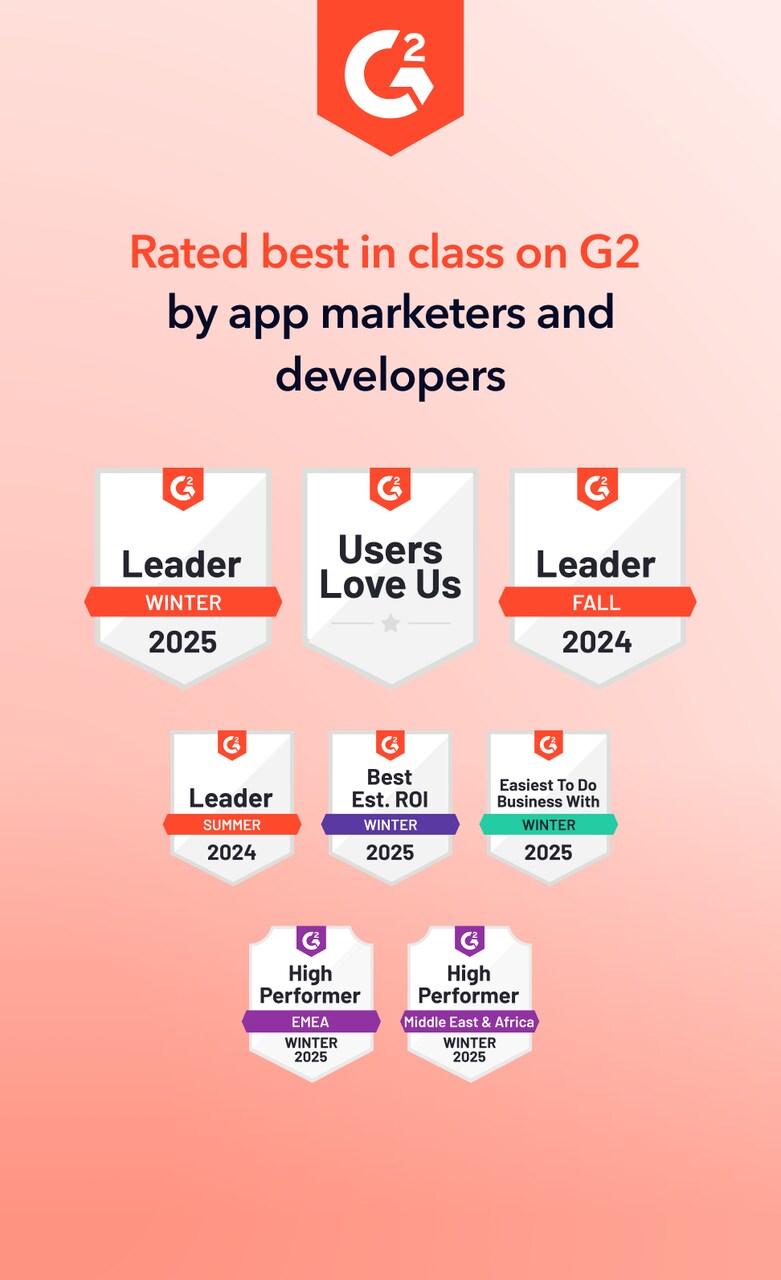Looking to boost your app's visibility and acquire more users? Our 2025 ASO Report is your ultimate guide to navigating the evolving app store landscape. Packed with data-driven insights, keyword trends, and top-ranking app strategies, this report will equip you with the knowledge to optimize your app's presence and achieve organic growth.
Monthly Active Users (MAU) helps you understand whether people continue finding value in your app after installing it. Instead of focusing on downloads or one-time activity, MAU shows how much of your audience returns within a month and whether your product, ASO efforts, and engagement strategies are working.
What are Monthly Active Users (MAU)?
Monthly Active Users (MAU) is a core user engagement metric that represents the number of unique users who engage with your app at least once within a 30-day period.
In mobile growth and App Store Optimization (ASO), MAU provides directional insight into how many people return to your app after installing it. While it doesn’t capture frequency or depth of usage, it helps quantify ongoing relevance and retention.
In short: MAU tells you how many unique users were “active” in the past month.
What counts as “active” can vary depending on how your product defines it, opening the app, logging in, completing a session, or performing a key action like a search or purchase.
How to calculate Monthly Active Users (MAU)
You calculate MAU by counting the number of unique users who performed at least one qualifying action in your app during a 30-day window.
MAU Formula
There is no single universal formula, but the standard approach is:
MAU = Number of unique active users in the last 30 days
To calculate it, you need a reliable definition of what counts as an active user. Examples include:
- Opening the app
- Completing a session
- Clicking a key feature
- Finishing an onboarding or transaction
Most analytics platforms show MAU automatically, but growth teams should still validate that the definition of “active” aligns with the app’s business model.
For ASO teams, MAU can reveal whether increased keyword visibility or improved conversion (CVR) leads to stronger in-app activity. With MobileAction’s Analytics Overview or Organic Acquisition Dashboard, you can compare MAU trends with store traffic and keyword performance to understand which visibility gains actually translate into active usage.
MAU vs DAU
Daily Active Users (DAU) measures how many unique users engage with your app in a single day, while MAU measures engagement across a month.
Both help you understand user behavior, but they answer different questions:
- DAU shows short-term activity and helps you track daily usage patterns.
- MAU shows broader usage and long-term product reach.
When you compare MAU vs DAU, you get insights into app stickiness. Many teams calculate DAU/MAU ratio to understand how frequently users return. A higher ratio means stronger engagement.
Understanding the difference between daily active users vs monthly active users is important when matching your ASO efforts, onboarding flow, and retention tactics to user behavior patterns.
Why Monthly Active Users (MAU) is important
Understanding what is MAU is useful because it connects directly to your app’s health, growth, and revenue potential.
Here’s why the MAU metric matters:
- It shows how many people actively rely on your app monthly, not just how many download it.
- If downloads increase but MAU stays flat, your onboarding or product value needs attention.
- Growth teams use MAU to estimate revenue, engagement, and seasonality patterns.
- When you increase discoverability with stronger metadata or semantic keyword strategies, MAU helps you understand whether new users stay active.
- MAU works alongside DAU, retention rates, and session depth to create a full picture of product performance.
How to increase MAU
Increasing MAU requires improvements in both acquisition and retention. Key approaches include:
1. Improve app store visibility
Higher visibility leads to a stronger top of funnel. You can achieve this by:
- Updating metadata to target higher-potential keywords
- Tracking keyword movements
- Identifying competitor keyword gaps
MobileAction’s Metadata Optimizer, Keyword Suggestions, and Keyword Trends help ensure your app consistently ranks for relevant terms.
2. Strengthen conversion rates
More high-intent visitors converting to installs means more potential active users. Creative improvements and localized listings directly affect this.
3. Improve onboarding and early engagement
A smoother onboarding flow helps turn new installs into active users.
4. Add mechanisms that encourage repeat usage
Features like streaks, reminders, saved content, or personalization can boost returning sessions.
5. Reduce friction within the product
Performance issues, long load times, or confusing navigation all harm MAU.
When teams combine ASO improvements with product changes, MAU grows more consistently and sustainably.
The limitations of MAU
MAU is a useful metric, but it has limitations:
- It doesn’t show depth of engagement. A user who opens the app once counts the same as a highly active user.
- It can mask retention problems. If you acquire many new users every month, MAU might look stable even if most churn quickly.
- It doesn’t explain why users are active. You still need supporting metrics like session length, DAU/MAU ratio, and feature adoption.
- MAU is sensitive to acquisition spikes. Seasonal campaigns or promotions can inflate MAU without reflecting long-term behavior.
For deeper analysis, combine MAU with cohort retention, conversion funnel data, and ranking improvements.
Frequently asked questions
What is a good MAU?
A “good” MAU depends entirely on your app category, business model, and market size. There is no universal benchmark. What matters is whether your MAU is growing steadily, whether it matches your acquisition efforts, and whether the users you acquire continue to stay active month after month. A healthy MAU is one that increases consistently without relying on short-term spikes or paid campaigns to stay stable.
What is an example of MAU?
An example of MAU is when an app reports that 120,000 unique users opened or interacted with the app at least once in the past 30 days. Even if some of these users opened the app many times, each person only counts once toward MAU. This number represents the app’s active monthly audience, not total downloads or total sessions.
What is a MAU in gaming?
In gaming, MAU refers to the number of unique players who opened or played the game at least once within a 30-day period. It helps studios understand how many players return, how engaging the game is over time, and whether new updates or events lead to sustained activity. Gaming companies often track MAU alongside retention rates, event participation, and in-game spending to measure overall performance.
Related terms
Looking to boost your app's visibility and acquire more users? Our 2025 ASO Report is your ultimate guide to navigating the evolving app store landscape. Packed with data-driven insights, keyword trends, and top-ranking app strategies, this report will equip you with the knowledge to optimize your app's presence and achieve organic growth.





























